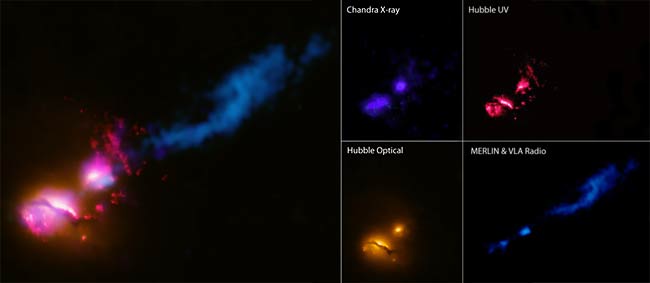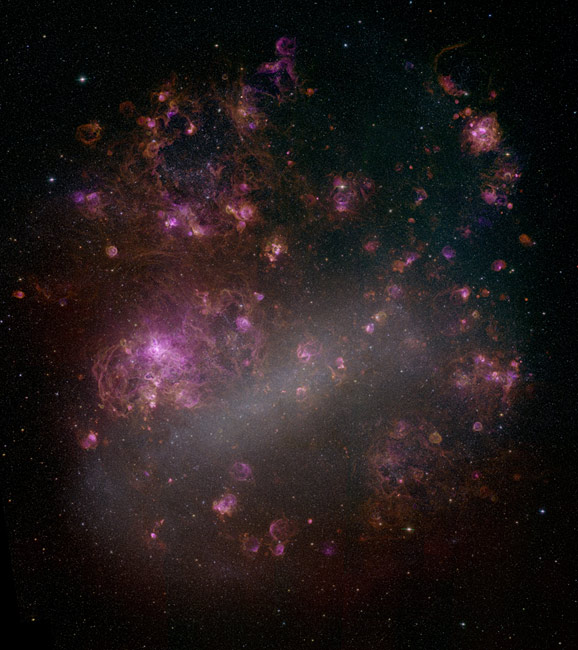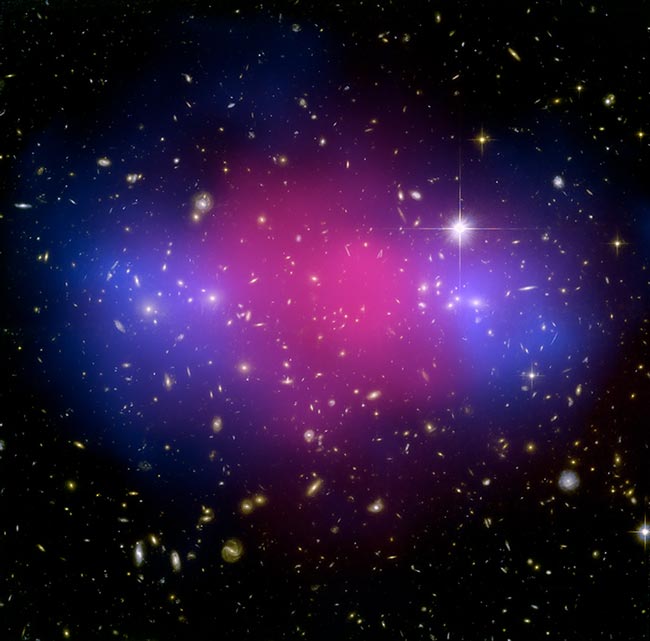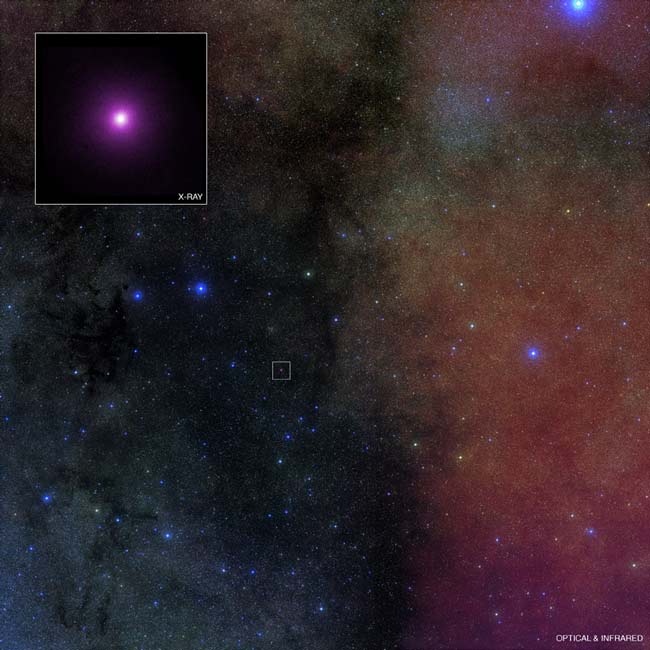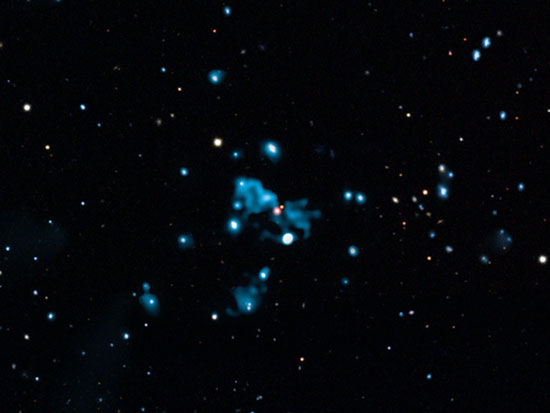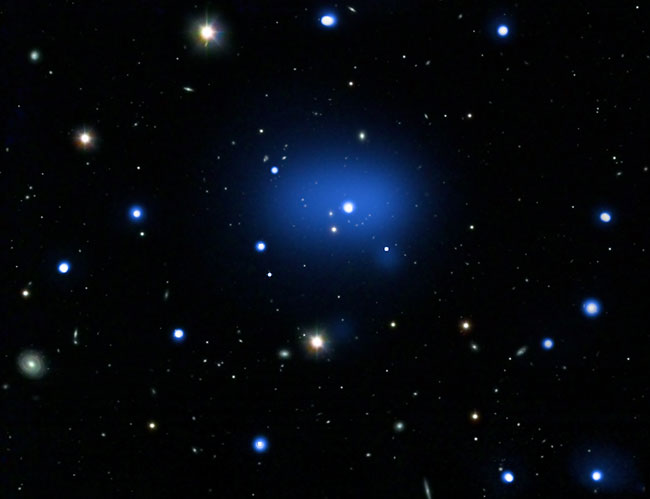Our X-Ray Universe: Amazing Photos by NASA's Chandra X-Ray Observatory
Neutron Stars Spew Like Black Holes
This artist's illustration depicts the jet of relativistic particles blasting out of Circinus X-1, with a Chandra image (inset) of the jets. Illustration
Speeding Star to Escape from Milky Way
A view of the Puppis A supernova remnant with a close-up image of the fast-moving neutron star RX J0822-4300. X-ray data (pink) and optical data (purple) highlights oxygen emission.
Galaxy Blasts Neighbor with Deadly Jet
A powerful jet from a supermassive black hole is blasting a nearby galaxy in the system known as 3C321, according to new results from NASA. This galactic violence, never seen before, could have a profound effect on any planets in the path of the jet and trigger a burst of star formation in the wake of its destruction.
Echo of Ancient Cosmic Explosion Seen
The Large Magellanic Cloud, which harbors the remnants of supernova 0509-67.5. Light echoes from an ancient explosion have been spotted bouncing off of nearby dust clouds.
Powerful Cosmic Collision Creates Divorce of Matter
Another powerful collision of galaxy clusters has been captured with NASA's Chandra X-ray Observatory and Hubble Space Telescope. Like its famous cousin, the so-called Bullet Cluster, this clash of clusters shows a clear separation between dark and ordinary matter. This helps answer a crucial question about whether dark matter interacts with itself in ways other than via gravitational forces.
Black Holes Caught in Tug-of-War
This optical and infrared image from the Digitized Sky Survey shows the crowded field around the micro-quasar GRS 1915+105 (GRS 1915 for short) located near the plane of our Galaxy. The inset shows a close-up of the Chandra image of GRS 1915, one of the brightest X-ray sources in the Milky Way galaxy.
Chandra Telescope Spies X-ray 'Ghost' of Black Hole
The diffuse blue object near the center of this composite image is believed to be a cosmic "ghost," called HDF 130, generated by a huge eruption from a supermassive black hole in a distant galaxy.
Breaking space news, the latest updates on rocket launches, skywatching events and more!
New Record For Most Distant Galaxy Cluster
This record-breaking object, known as JKCS041, is observed as it was when the Universe was just one quarter of its current age. This image contains X-rays from NASA's Chandra X-ray Observatory, optical data from the Very Large Telescope (VLT) and optical and infrared data from the Digitized Sky Survey.
Identity of Puzzling Star Revealed
A Chandra X-ray Observatory image of the supernova remnant Cassiopeia A, with an artist's impression of the neutron star at the center of the remnant. The discovery of a carbon atmosphere on this neutron star resolves a ten-year old mystery surrounding this object.
3 Telescopes Combine for Stunning Milky Way Photo
In this spectacular image, observations using infrared light and X-ray light see through the obscuring dust and reveal the intense activity near the galactic core of the Milky Way. The image combines pictures from the Hubble Space Telescope, Spitzer Space Telescope and Chandra X-ray Observatory.

Space.com is the premier source of space exploration, innovation and astronomy news, chronicling (and celebrating) humanity's ongoing expansion across the final frontier. Originally founded in 1999, Space.com is, and always has been, the passion of writers and editors who are space fans and also trained journalists. Our current news team consists of Editor-in-Chief Tariq Malik; Editor Hanneke Weitering, Senior Space Writer Mike Wall; Senior Writer Meghan Bartels; Senior Writer Chelsea Gohd, Senior Writer Tereza Pultarova and Staff Writer Alexander Cox, focusing on e-commerce. Senior Producer Steve Spaleta oversees our space videos, with Diana Whitcroft as our Social Media Editor.


